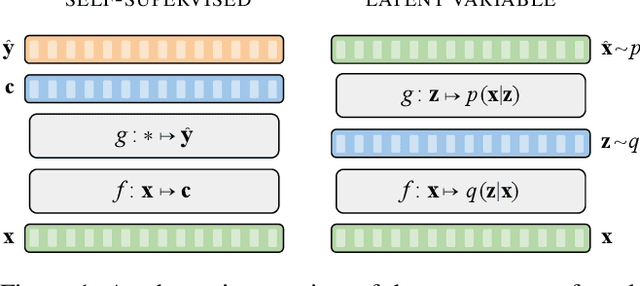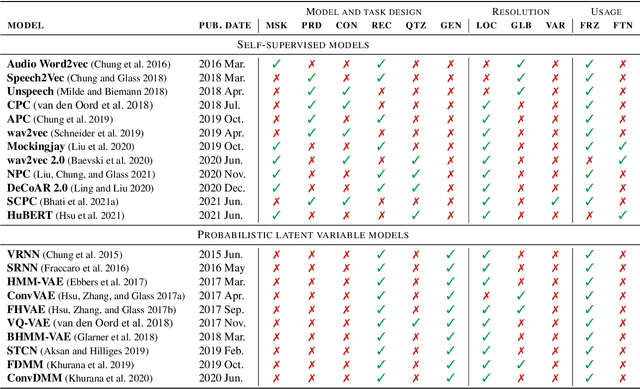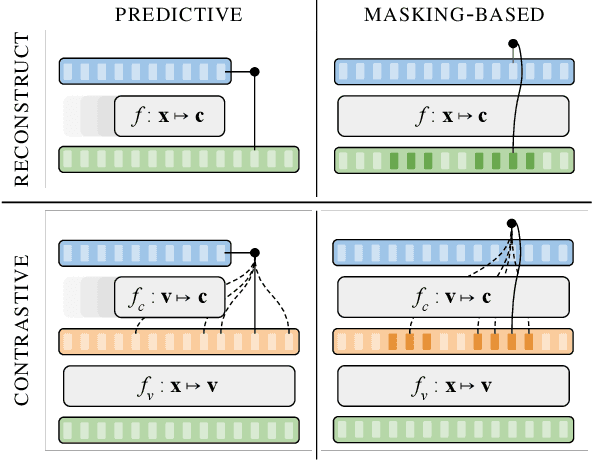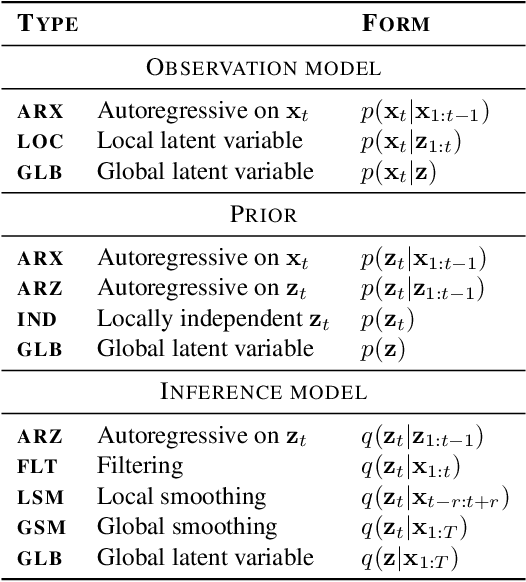A Brief Overview of Unsupervised Neural Speech Representation Learning
Paper and Code
Mar 01, 2022



Unsupervised representation learning for speech processing has matured greatly in the last few years. Work in computer vision and natural language processing has paved the way, but speech data offers unique challenges. As a result, methods from other domains rarely translate directly. We review the development of unsupervised representation learning for speech over the last decade. We identify two primary model categories: self-supervised methods and probabilistic latent variable models. We describe the models and develop a comprehensive taxonomy. Finally, we discuss and compare models from the two categories.
* The 2nd Workshop on Self-supervised Learning for Audio and Speech
Processing (SAS) at AAAI
 Add to Chrome
Add to Chrome Add to Firefox
Add to Firefox Add to Edge
Add to Edge